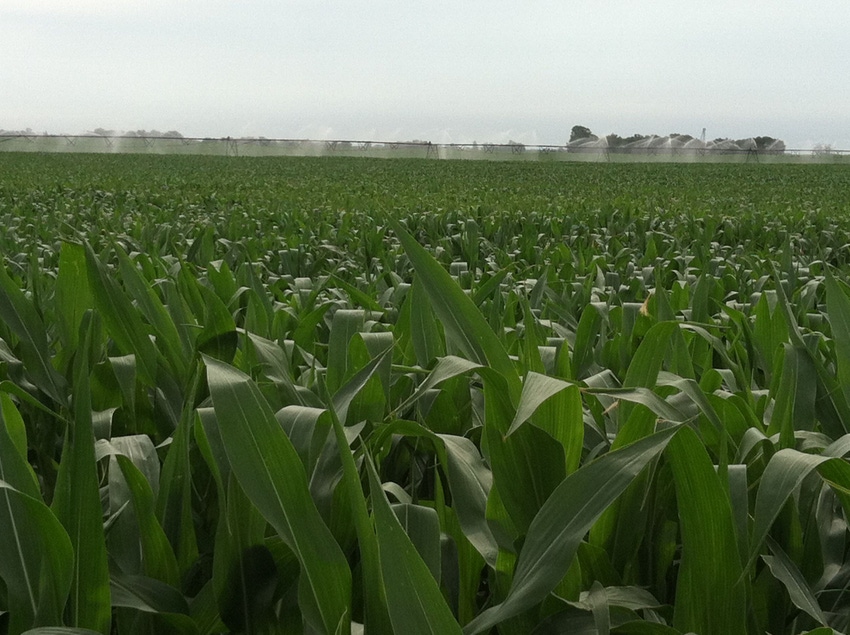July 11, 2012

It’s no surprise that USDA corn production estimates are down, as well as predicted corn yield for the growing season, due to the heat and drought persisting across the Corn Belt. Estimated soybean production has also been reduced from last month’s report, as well as yield predictions. Price estimates, as seen already, have increased for both commodities.
Corn
U.S. feed grain supplies for 2012-2013 are projected sharply lower with corn production prospects reduced 1.8 billion bushels from last month. The projected U.S. corn yield is lowered 20 bu./acre to 146 bu. reflecting the rapid decline in crop conditions since early June and the latest weather data. Persistent and extreme June dryness across the central and eastern Corn Belt and extreme late June and early July heat from the central Plains to the Ohio River Valley have substantially lowered yield prospects across most of the major growing regions. Harvested area is also reduced slightly based on the June 29 Acreagereport.
Reduced supplies and higher prices are expected to sharply lower 2012-2013 corn usage with the biggest reduction for feed and residual disappearance, projected down 650 million bushels. Food, seed and industrial use is also projected lower, down 105 million bushels, mostly reflecting a 100-million-bushel reduction in corn used to produce ethanol. Exports are projected 300 million bushels lower as tight supplies, higher prices, and strong competition from South American exporters limit U.S. shipments. A 52-million-bushel increase in beginning stocks and a 15-million-bushel increase in imports offset only a small portion of the expected reduction in this year’s crop. Ending stocks for 2012-2013 are projected at 1.2 billion bushels, down 698 million from last month’s projection. The season average 2012-2013 farm price for corn is projected at $5.40-6.40/bu., up sharply from $4.20-5 in June.
Trade changes to the 2011-2012 corn balance sheet boost projected 2011-2012 ending stocks. Imports are raised 2 million bushels based on the latest trade data. Exports are projected 50 million bushels lower reflecting the slowing pace of old-crop sales and shipments. The season average 2011-2012 farm price for corn is projected at $6.10-6.30 , up from $5.95-6.25 last month, as cash and futures prices have soared since early June on intensifying drought and heat across the Midwest.
Global coarse grain supplies for 2012-2013 are lowered 47.6 million tons mostly reflecting the 46.2-million-ton projected reduction in the U.S. corn crop. Partly offsetting is a 1.3-million-ton increase in EU-27 corn production, mostly reflecting higher reported area, and a 0.4-million-ton increase in Canada corn, also on higher reported area.
Global 2012-2013 coarse grain trade is projected lower this month mostly reflecting lower corn exports from the United States. Corn imports are lowered 2.0 million tons each for China and EU-27, 0.5 million tons each for Japan and South Korea, and 0.3 million tons for Mexico.
Global corn consumption drops 22.9 million tons with most of the decline in the United States. Corn consumption is also lowered 0.8 million tons for India and 0.5 million tons each for Japan and South Korea. Global corn ending stocks are projected 21.7 million tons lower with the United States accounting for 17.7 million tons of the decline. Stocks are also lowered for China, Brazil, EU-27 and Mexico.
Soybeans
U.S. oilseed production for 2012-2013 is projected at 92.7 million tons, down 4.2 million from last month, with lower soybean production accounting for most of the change. Soybean production is projected at 3.050 billion bushels, down 155 million as increased harvested area is more than offset by reduced yields. Harvested area, estimated at 75.3 million acres in the June 29 Acreagereport, is 2.3 million above the June projection. The soybean yield is projected at 40.5 bu./acre, down 3.4 bu. from last month. The drop reflects sharply declining crop conditions resulting from limited rainfall since early April coupled with excessive heat across much of the producing area in late June and early July.
Soybean supplies are 160 million bushels below last month’s forecast due to lower beginning stocks and reduced production. Soybean crush is projected at 1.61 billion bushels, down 35 million reflecting the impact of higher soybean meal prices on meal exports and domestic disappearance. Soybean exports for 2012-2013 are reduced 115 million bushels to 1.37 billion reflecting lower U.S. supplies. Increased exports from South America and Canada partly offset reduced U.S. exports.
Soybean ending stocks are projected at 130 million bushels, down 10 million. U.S. soybean crush for 2011-2012 is raised 15 million bushels to 1.675 billion reflecting stronger-than-expected domestic soybean meal use. Soybean exports for 2011-2012 are projected at 1.34 billion bushels, up 5 million, reflecting strong late-season sales and increased imports for China. Seed use is raised and residual is reduced based on indications from the June 29 Acreage and Grain Stocksreports, respectively. Soybean ending stocks for 2011-2012 are projected at 170 million bushels, down 5 million.
Prices for soybeans and soybean meal for 2012-2013 are raised this month. The U.S. season average soybean price is projected at $13-15/bu., up $1 on both ends of the range. Soybean meal prices are projected at $365-395/short ton, up $30 on both ends of the range. The soybean oil price projection is unchanged at 52.5-56.5¢/lb.
Global oilseed production for 2012-2013 is projected at 465.7 million tons, down 5.1 million from last month. Lower soybean, cottonseed and sunflowerseed production estimates are only partly offset by increases for peanuts and rapeseed. Global soybean production is projected at 267.2 million tons, down 3.9 million mostly due to lower production in the United States. Higher soybean production for Canada resulting from increased area partly offsets the U.S. reduction. Global oilseed ending stocks for 2012-2013 are projected at 63.1 million tons, down 2.7 million as reduced supplies are only partly offset by lower crush. Lower soybean stocks in the United States and South America account for most of the change.
You May Also Like




